Review: HTC Aria
Jun 18, 2010, 12:03 PM by Philip Berne
The HTC Aria is a slick little Android phone, easily the most pocketable of the bunch. Did it sacrifice too many features to keep its small stature? Find out in our in-depth review.
Form
Is It Your Type?
Is It Your Type?
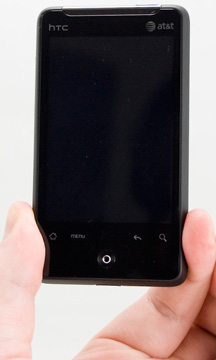
The HTC Aria brings a small, elegant form to AT&T's nascent Android lineup. It's not a flagship like Verizon's Droid Incredible or Sprint's Evo 4G, both also HTC devices, but it's still a stylish phone with a great interface design. The right buyer won't mind its shortcomings, though power users might find it wanting.
Body
The HTC Aria is a slick little number. It's much smaller than I expected, looking at press photos. It's a third of an inch shorter than the HTC Hero on Sprint, and it's one of the smaller tablet phones I've seen.
There are plenty of unique design elements that set this phone apart; some I liked, some I did not. The sides and back of the phone are all part of a single battery cover. It's very difficult to remove, but underneath you'll find canary yellow guts. It's a cool look, and it's interesting that HTC is even paying attention to internals this way on recent phones (the HTC Evo 4G is bright red inside). On the back of the phone are four large exposed screws. It's an interesting style choice, and HTC says these are part of the phone's structural body, not just for show. I'm not a fan. The phone is otherwise sleek and classy, but the rivets make it seem more like a rugged device, which it is not.
The front of the phone is dominated by the 3.2-inch touchscreen. That's the same size you'll find on the HTC Hero. Beneath the screen are four touch sensitive keys: Home, Menu, Back and Search. I'll always miss the Send and End keys on phones; when did we all agree to give these up? In any case, these buttons worked just fine.
Below the buttons there is an optical joystick button. Android doesn't really need an mouse option; it works fine by touch. Sometimes the button's purpose was counterintuitive, and less useful than, say, the trackball on the Nexus One. On the home screens, for instance, it would scroll from panel to panel, but not from item to item on screen. It's best used for moving the cursor between letters to correct spelling errors, and for this it was helpful.
There are very few buttons around the sides of the HTC Aria. There's a screen lock / power button up top, nicely raised and easy to find without looking. There's a volume rocker switch on the left side. The rocker was flush with the phone, and was difficult to use. Sometimes it didn't react properly or quickly when I pressed if my aim was off. I would like to see more buttons on HTC's Android phones, especially a camera shutter button and maybe some media playback controls.
I like the design of the Aria, except for those exposed rivets. HTC doesn't go too far with its mix of textures. The front face is glossy, everything else is soft touch. There are a few polished metal accents, and these break the all black color scheme nicely. Tablet phone designs can be quite boring, but this phone is stylish, like a little black dress.
The Three S's
Screen
Though it packs fewer pixels than some of its larger cousins, the HVGA display on the HTC Aria looks great, thanks to its smaller size. Text looks sharp and icons are detailed and colorful. Inside, the screen is plenty bright and contrasty, thanks to HTC's exceedingly dark Sense interface, which relies heavily on white text on a black background. Outdoors, this backfires a bit. I could still read the screen under bright, glaring sunlight, but it was difficult, especially at a slight angle. It wasn't unreadable, like some AMOLED screens, but it did fade considerably.
Sound
Calls on the HTC Aria sounded very good. On my end, through the phone's earpiece, calls sounded nice and clear. My only problem was properly aligning the earpiece with my ear. On their end, callers reported an equally clear sound with no static or drop-outs.
The speakerphone should be much louder. It couldn't reach a useful volume outdoors or in a fast moving car, and when I cranked it up all the way, I heard lots of distortion. Even for ringtones, the phone just wasn't loud enough, and even the pre-loaded rings would distort at high volumes.
Signal
The HTC Aria would always report a strong signal, usually four to five bars of service on AT&T's 3G network. This didn't always translate to a fast network connection. Even with a full signal, some calls never went through, and some were dropped inexplicably. The browser would occasionally stall, as well. Some of this is par for the course on AT&T's network in my area, especially the dropped calls. But this could also mean that the Aria is exaggerating its signal strength a bit.
The phone did a better job with Wi-Fi, though, finding my home network easily and keeping a strong connection with my wireless router.
My test unit would occasionally turn off the phone's data network access. Even though the phone reported a 3G signal with four bars, it was unable to connect until I dug through the settings menu to enable the Mobile Network connection option.
Battery
Battery life on the HTC Aria is pretty good, better than many other Android phones. I was able to get more than six hours of talk time out of the phone. Better yet, the phone lasted through a couple day's of testing without needing a charge. If you're going to be doing a lot of navigating or streaming videos, you'll want to charge every day, but most people will be able to get by if they forget to charge the phone overnight.
Touch
Touch sensitivity on the HTC Aria was perfect. I never had any trouble browsing the interface, scrolling through long lists or navigating Web pages. The phone supports multi-touch gestures, and pinch-to-zoom worked well everywhere I tried it. Even the touch sensitive buttons beneath the screen gave me no trouble.
Basics
Menus
The HTC Aria uses HTC's Sense interface on top of Android, and I've long been a fan of HTC Sense. It adds some polish and graphical flair to Android without changing the basic interface concept. Android can be a difficult interface to learn at first, and HTC's Sense doesn't make it any easier, but it does add plenty of customization options, cool and useful widgets and deeper integration with social networks like Twitter, Facebook and Flickr.
If you're not familiar with Android or HTC Sense, here's a brief tour. There are seven home screen panels that you can flick through side to side, and you can add shortcuts or widgets to the home screens. Shortcuts can be for applications; contacts, so you can direct dial with one tap; or any number of things, including navigation directions, so you can tap a shortcut and start navigating home in one step. Widgets are little, active applications that live on the home screen. There are dozens to choose from, ranging from weather forecasts to music playback controls to basic Twitter and Facebook apps that update continually.
Android can be confusing because there are so many ways to access features. Sometimes you tap and hold an icon to see what it can do. Sometimes you press the menu key for more options. Notifications and other features show up in a menu that drags down from the top. It takes some getting used to, but the rewards are great and Android offers better customization than any other smartphone OS.
Though the HTC Aria uses Android 2.1, it doesn't get all of the stock features. Notably, the phone is not powerful enough to run Live Wallpapers. But all of the cool HTC Sense features are on board, including the new pinch gesture on the desktop to see a windmill of all your home screen panels. You also get the cool address book and an improved interface in many features, including the music player, the calendar and the text messaging app.
Calls / Contacts
Calling
Making calls on the HTC Aria is fast and easy. From the phone's dialpad, you can start typing numbers or corresponding letters on the keypad and the phone will search the contact list for names and numbers that match. Once you've placed a call, the phone gives you on-screen buttons for the speakerphone, the mute function, and the contact list. More features, like adding a call for a three-way chat, are accessible by pressing the menu key.
The phone was zealous in locking the main screen during a call, an action triggered by the proximity sensor. Sometimes it could be difficult to keep the calling screen lit, like when I had to type number on the dialpad. Just keep your fingers far from the sensor, which is under the AT&T logo, and you'll be fine.
Contacts
HTC Sense uses the best address book in the game. First of all, it synchronizes with your Google account, Microsoft Exchange, Facebook and Twitter. You get contact information and pictures, and you can link a contact to multiple services. For contact information, the phone can store nearly limitless quantities of phone numbers, email addresses, postal addresses and more.
Beyond the simple contact info, each contact card also aggregates all of the text messages and email you've exchanged with that person. You get upcoming calendar events and recent updates from Facebook. You get photo galleries from Facebook and Flickr. The address book is like two or three apps rolled into one, and it's the most powerful, underrated feature on this phone.
Messaging
The HTC Aria features a nice assortment of messaging features and some great social networking integration to boot. Social networks integrate deeply into the Aria's OS. When you initially setup the phone, you can set up sync options for Facebook, Twitter and Flickr. The official Facebook app comes preloaded, and it lets you check status updates, upload photos and find friends. It offers a nice assortment of features. The phone doesn't include the official Twitter app, and instead uses HTC's Peep. I like the official app better, and it's a free download from the Android App Market. Peep didn't seem reliable with updating my Twitter feed, and it lacks some newer features, like the official Twitter retweet style. It's not bad, but the official app is better.
For email, there's Gmail, and then there's everything else. Gmail obviously gets special attention on this Google Android phone with its own app, which includes support for Gmail labels, easier navigation and other cool features. The regular Mail app can still handle POP3, IMAP4 and Exchange accounts nicely. The same goes for instant messaging. There's a dedicated app for Google Talk, and then a separate app for everything else, including AIM, MSN Messenger and Yahoo messaging. The Gtalk app looks better than the catch-all app for the other three services, but both apps worked just fine for simple IM tasks.
The HTC Messages app works nicely for text and MMS messages. It shows messages in a threaded, conversational format, with avatar pictures for your contacts. MMS messages went out just fine, but the phone had some trouble receiving MMS pictures from my other devices. I got file format errors, even though I was using another HTC Android device.
Extras
Music
The music player on the HTC Aria looks better than the standard Android player, but it lacks some of the stock player's functionality. The phone had no trouble finding my music on the microSD card, and most, but not all, of my album artwork came through. It's easy to create new playlists and shuttle through tracks, but there's no equalizer or any advanced music features. The stock Android player lets you start a Web or YouTube search from the Now Playing screen by holding down on an artist, song or album name, but the HTC Sense player doesn't have this feature.
The HTC Aria, like AT&T's other Android phone, the Motorola Backflip, cannot load apps that are not featured in the Android App Market. That includes the Sirius XM radio streaming app. The phone comes pre-loaded with AT&T's own streaming radio service and an FM radio instead. AT&T Radio was better than I expected. It includes some streaming stations from AT&T as well as a Last.fm client.
For music hardware, the HTC Aria is adequate. The phone uses a 3.5mm headphone jack so I could listen with my favorite pair of earbuds. AT&T includes a 2GB microSD card in the memory slot, beneath the battery cover but not under the battery itself. That's a good start, though I'm seeing more 8GB cards packaged with phones these days. I've already complained about the wan, distorted sound from the phone's speaker, so I'll only add that when the phone is screen up, the speaker is completely muffled lying flat against the surface below.
Camera
Camera
The HTC Aria has a nice camera interface. The camera springs to life in about a second once you open the app. It takes another second or two to focus properly, and if you change your mind about your focal point, you can't stop the process until the camera is locked on. Again, a two-stage shutter button would be a nice addition here, but the Aria uses the optical joystick instead. Occasionally, this caused problems. After the photo is taken, you get a review screen with options down the side to take another picture, send the image as a message or upload to various social networks, or delete the image. It was easy to flick a finger across the optical button, thus highlighting an unwanted option. It was never a fatal error, but it did get in the way of fast shooting.
The camera features the standard assortment of imaging options plus a few bonuses. The Aria uses touch focus, as well as face detection, and both of these worked well. You can tweak the white balance, brightness and contrast, or add some color effects like sepia tones or polarized colors.
Image Gallery
The image gallery on the HTC Aria works very nicely. You can flick through pictures quickly, then zoom in with the multitouch pinch and zoom gesture. From the gallery, you can upload pics quickly to Facebook, Twitter, Flickr or Picasa, or send them along as an email or text message. The HTC Aria also gets Bluetooth object push, so you can send picture files to a PC paired with the phone. There's a slideshow feature, and you can view images as a grid or in a timeline. From the photo gallery, you can even view albums from Facebook and Flickr; your albums or albums your friends have posted.
Image Quality
Photos
Image quality on the HTC Aria was okay, but not impressive. Indoors, my pictures looked washed out and grainy. The camera has no flash, and it had trouble with low light situations. Outdoors, pictures looked much better, but details were lacking and images looked oversharpened and digital at full crop. The touch focus could hardly handle close-ups, and never seemed to focus properly. This left my subject blurry in many shots, while objects farther away came through more clearly. Photos were definitely fine for Facebook sharing and even the occasional Flickr upload. Not quite printworthy, though, and I wouldn't use the Aria to replace a point-and-shoot digital camera on special occasions.
Video
Video quality was worse than still images. Colors looked fine and accurate, but videos had an unnerving shakiness to them. The camcorder shoots videos in VGA resolution, but the quality was poor enough that I wouldn't watch them on a larger television screen. Fine for occasional YouTube sharing, but only if you can hold the camera steady.

3GPP / MPEG-4 format (viewable with QuickTime)
Browse / Customize
Browse
The standard Android Web browser on the HTC Aria worked very well for most tasks. Our own phonescoop.com homepage looked picture perfect, and pages like CNN and the New York Times looked great in their full desktop versions. The Aria can't handle Flash, and it won't be powerful enough for a proper Flash 10.1 upgrade down the line, but for everything else, the browser rendered accurate pages with images that looked sharp.
Navigating pages was also smooth and easy thanks to the highly responsive touchscreen. Long pages would glide by at the slightest touch. Pinch to zoom gestures worked equally well.
It has recently been discovered that HTC Sense devices like the Aria save thumbnail images of your bookmarks in a hidden folder on the microSD card. These images are not erased in a factory wipe of the device, though formatting the card should clean them out. This shouldn't possess a problem for most people, but if you want to be extra secure with your bookmark list, be sure to erase the card before you pass the phone along.
Customize
The main home screen panels on the HTC Aria are almost infinitely customizable. You can change wallpapers, shortcuts, widgets and more. To help rearrange things quickly, HTC offers Scenes, which lets you save your custom home screen layouts and swap between your custom sets and a few preset options. Deeper into the phone, there is less to change; you can't adjust the color scheme or the main application drawer layout. There are plenty of settings that you can tweak, from custom ringtones for individuals or groups to the style of the onscreen keyboard. Android allows fairly deep access to the system, so there are plenty of third party options available from the App Market to customize the phone even further.
Extras
Bluetooth
The HTC Aria gets a nice selection of Bluetooth options. I was easily able to pair the phone with my Bluetooth headset as well as a set of stereo Bluetooth speakers for music playback. The Aria can also push image files over Bluetooth to a connected computer for wireless transfers.
Clock
HTC loves clocks. There are a dozen or so clocks that you can add to the homescreen, including a world clock with two time settings, and a variety of styles. When you unlock the screen, there's a clock front and center to check the time quickly. In almost every app, the notification bar is visible up top with a small digital clock on it. To check the date, tap the notification bar and it appears.
GPS
AT&T provides an odd assortment of GPS options on the device. TeleNav makes AT&T Navigator, which is a very good navigation program, but it costs a monthly fee. Better to stick with Google Maps, which also offers turn-by-turn navigation at no cost. The phone also comes with AT&T Maps, which is like Navigator but without directions. It offered a nice assortment of points-of-interest and good location searching. Still, though the information might be better, the app didn't offer as many features as Google Maps. Pinching gestures did not work in AT&T Maps, which pretty much seals the deal for Google's software.
Other Extras
The HTC Aria will not allow you to load apps from sources beyond the Android App Market. A surprising number of major and interesting apps are available outside the Market's purview. Besides the Sirius XM app, the new Swype keyboard beta, for instance, is only available by direct download, and not through the app store. It's an annoying and strange policy AT&T has enacted, as Google doesn't restrict its own phones, and AT&T doesn't restrict BlackBerry or Windows Mobile devices in the same way. Only the Apple iPhone has similar restrictions.
Video Tour
Wrap-Up
The HTC Aria may not be the most powerful Android phone on the market, but it's a very appealing device and a great addition to AT&T's Android lineup. Even fans of Verizon Wireless' Droid tablet phones might want to consider the smaller, stylish HTC Aria. It never felt underpowered, and the lower resolution screen was still bright and crisp enough to handle text and images clearly with no jagged edges or pixel problems.
HTC's Sense interface is far superior to the other custom interface designs available on Android devices, like Motoblur on the Motorola Backflip or Cliq, or TouchWIZ on the Samsung Behold II. It adds more features and functions to Android without getting in the way. It augments Android without changing the experience for the worse.
It would be fun to see a small phone like this with some truly high-end features. After all, can't power users appreciate a device that's hardly noticeable in a pocket? A camera upgrade, or a faster processor for Flash and Live Wallpaper support, would be nice improvements, but as it stands the Aria is solid choice. It sets itself apart from the big dogs with its style and size, without sacrificing the features that make Android engaging.
Comments
ATT & Google Maps - need clarification
Thanks!
not the most powerful
Not a bad little phone
(continues)
I have Played with this


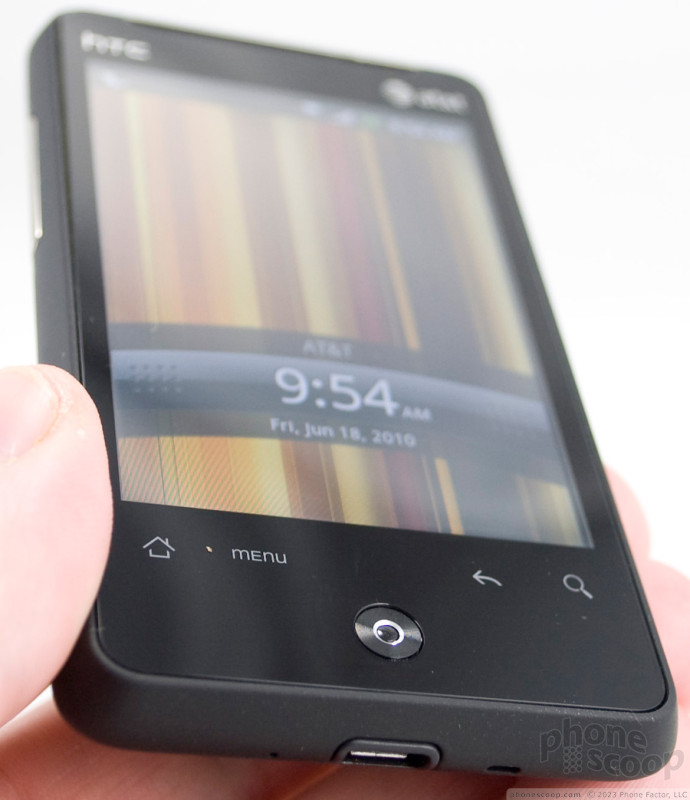





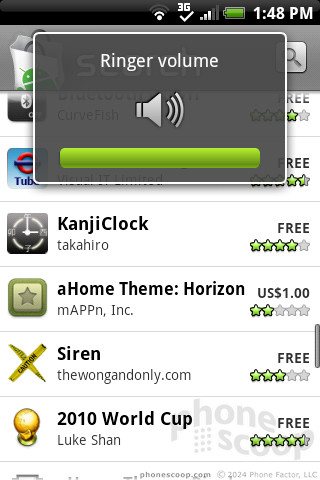







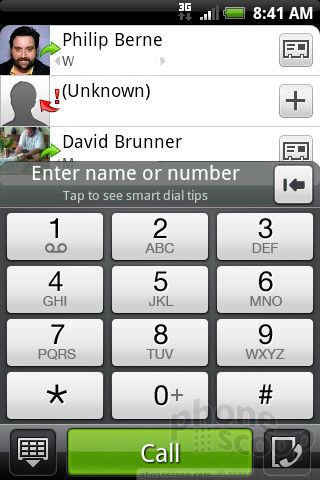





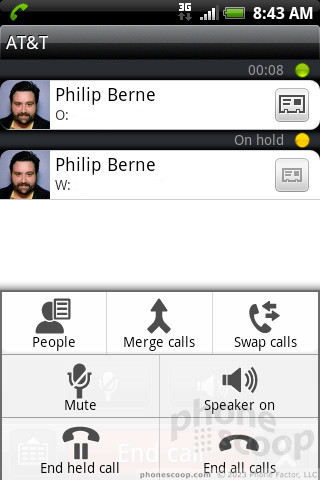










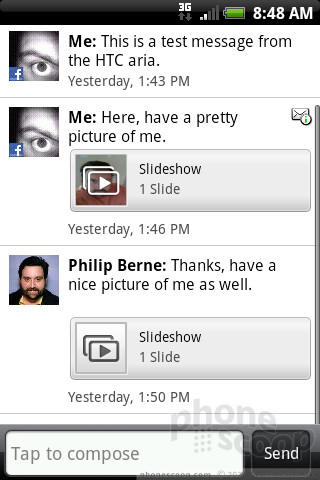









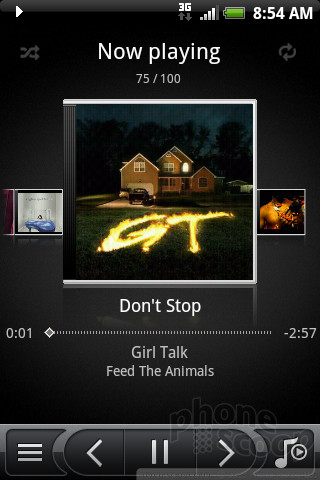







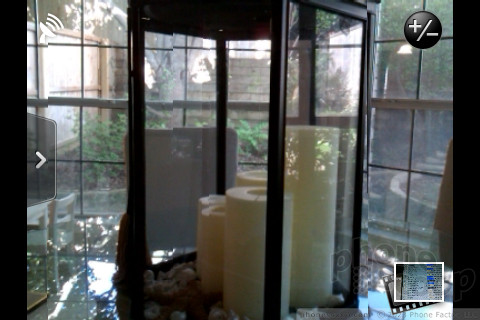




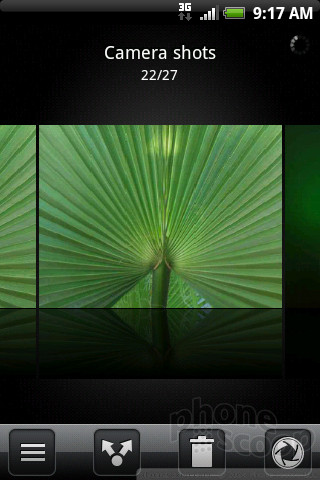




















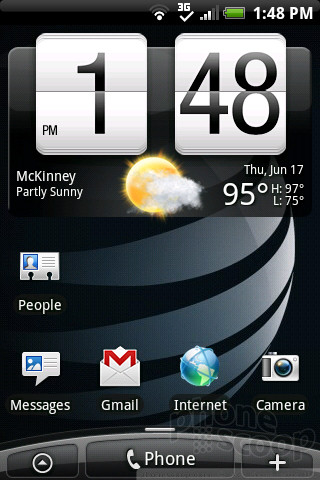





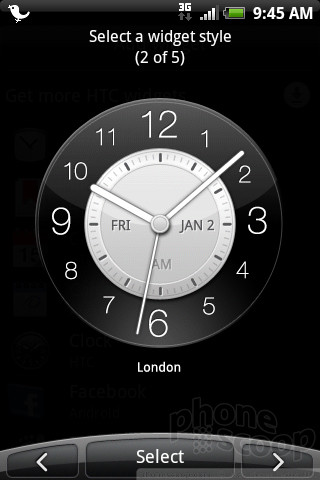




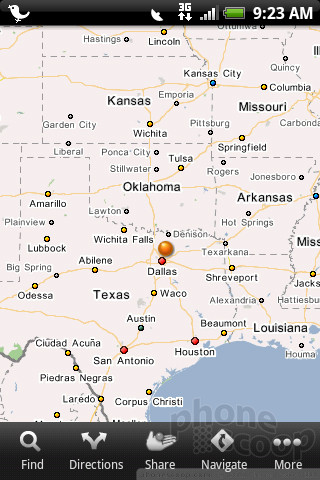









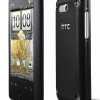 AT&T Announces HTC Aria
AT&T Announces HTC Aria
 What is C Band 5G?
What is C Band 5G?
 iPhone 14 Plus Offers a Big Screen For Less
iPhone 14 Plus Offers a Big Screen For Less
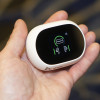 Hands On with Teams-Certified Bluetooth Earbuds
Hands On with Teams-Certified Bluetooth Earbuds
 HTC Aria
HTC Aria



